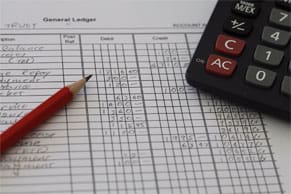For manufacturing companies, every dollar spent on labor directly reduces the bottom line. Yet, calculating and managing these costs involves more than simply tracking hours and wages. From benefits and taxes to training and overtime, the true cost of maintaining a productive workforce extends beyond base pay. And while reducing these expenses might seem straightforward, successful manufacturers know that thoughtful analyses and systematic approaches yield better results than obvious fixes. Understanding how to calculate, track, and optimize labor costs helps manufacturing leaders make wise decisions that balance efficiency with quality, ultimately leading to sustainable growth.
What Are Labor Costs?
In manufacturing, labor costs encompass all expenses associated with maintaining a workforce throughout the production process. These costs include production employees who work directly on products, as well as those who support manufacturing operations.
Base wages are the core labor expense, but the true cost of employing a workforce—often referred to as the “burdened” labor rate—embraces more than wages alone. According to data from the Bureau of Labor Statistics, additional expenses, such as payroll taxes and employee benefits, typically add 30% to 38% to total compensation costs in the manufacturing industry. These additional costs include:
- Mandatory payroll taxes, such as Social Security, Medicare, and unemployment insurance.
- Employee benefits, including health insurance, retirement plans, and life insurance.
- Paid time off for vacation, sick leave, holidays, and family leave.
- Additional compensation for specific situations, such as overtime, shift differentials, and performance bonuses.
- Workforce support including training, meals, equipment, and supplies, such as safety gear, uniforms, cell phones, and tools.
Key Takeaways
- Labor costs are one of the largest operating costs for manufacturers, extending beyond wages to include benefits, taxes, and other workforce expenditures.
- Understanding different types of labor costs—direct, indirect, fixed, and variable—helps manufacturers better predict expenses and control those costs.
- The true cost of labor can be calculated in various ways to provide a range of metrics that can be analyzed to help improve different aspects of manufacturing profitability.
- Labor cost reduction strategies should be developed thoughtfully to avoid cost-cutting that harms product quality and staff morale.
- Integrated manufacturing software provides the visibility and tools to make data-driven decisions about labor cost management.
Labor Costs in Manufacturing Explained
Manufacturing accountants track production costs and analyze manufacturing overhead to help guide their company’s decision-making. This involves scrutinizing labor costs through different lenses to better understand and control manufacturing expenses. Two dimensions that help inform key decisions are how closely costs can be tied to specific products and whether the costs vary with production volume. Insights from probing these dimensions are crucial for accurate cost accounting, budgeting, and strategic planning.
Direct Labor Costs
Direct labor costs are expenses tied to the production of goods. Generally, these expenses represent the cost of employees who physically manufacture products, such as assembly line workers and machine operators. Direct labor costs are typically variable, because they change in proportion to production volume, and can be traced to specific products or batches in the accounting system. Under accounting rules, these costs are capitalized as part of inventory value until products are sold, at which point they become part of the cost of goods sold (COGS).
Indirect Labor Costs
Indirect labor costs support production but aren’t directly tied to creating specific products. They include compensation for production supervisors, maintenance staff, material handlers, and quality assurance managers overseeing multiple production lines. Although essential, these costs cannot be directly attributed to a product, so they are usually accumulated as part of manufacturing overhead expenses, which are then distributed among products using various cost allocation methods. The methods might include a relevant allocation base, such as average machine hours per unit of production, or be more sophisticated, such as activity-based costing (ABC).
Fixed vs. Variable Labor Costs
Categorizing labor costs as fixed or variable is an important distinction that helps manufacturers better predict and control labor expenses. Fixed labor costs remain constant, regardless of production volume, and include, for example, staff salaries and guaranteed benefits. Variable labor costs are those that fluctuate with production levels, such as wages for hourly workers, piece-rate wages, overtime pay, and temporary worker wages during peak production periods. Labor costs can be either fixed or variable, regardless of whether they’re direct or indirect. Some labor costs, known as semi-variable costs, combine both fixed and variable elements—such as production supervisors who receive both a base salary and performance bonuses tied to output.
Understanding the fixed-variable relationship is critical for capacity planning, break-even analysis, and budgeting. For example, a higher proportion of variable labor costs can provide more financial flexibility during downturns but may limit profit potential during peak production periods. Many manufacturers strategically balance their mix of fixed and variable labor costs to maintain flexibility in responding to market changes while ensuring operational stability.
Why Is Calculating Labor Cost Important?
Calculating labor costs is essential for manufacturing companies because labor normally represents one of their largest operating expenses. Companies that precisely track and regularly analyze their labor costs can better control those costs, improving operational efficiency and profitability. Furthermore, because labor is a big component of total manufacturing cost, it directly influences inventory valuation, COGS, and pricing strategy. By not establishing accurate labor costs, companies risk setting prices too low to sustain desired gross profit or too high to remain competitive.
Detailed labor cost analysis also strengthens budgeting and forecasting, which manufacturers can take advantage of to model potential cost-saving opportunities, such as investing in automation. It plays a vital role in strategic decision-making by helping businesses assess the financial impact of expanding or reducing product lines, adjusting schedule shifts, or even whether to accept a large order that requires overtime. Moreover, labor cost data is invaluable for companies calculating ROI for new manufacturing technologies or evaluating whether to outsource.
Performance evaluation is another key function served well by labor cost calculations. A thorough understanding of labor costs helps companies establish metrics that can stand as productivity benchmarks against which to measure departmental efficiency and create performance-based compensation packages.
Variables That Impact Labor Cost
Manufacturing companies must consider several factors beyond base wages when calculating their true labor costs, which can vary based on company size, industry segment, geographic location, and workforce composition. According to the Bureau of Labor Statistics, benefits add 29% to base wages for small manufacturing companies (fewer than 100 employees), on average, and 38% for larger manufacturers (500+ employees). This 9% difference primarily stems from larger companies’ more substantial supplemental pay, insurance coverage, and retirement benefits.
Regardless of size, all manufacturers must account for these key variables when calculating their true labor costs:
- Employee wages: The base hourly or salary compensation paid to workers forms the foundation of labor costs; it varies by skill level, experience, tenure, and local market conditions. Unionized manufacturing facilities often operate under collective bargaining agreements that set standardized wage rates for all job classifications and include scheduled increases.
- Payroll taxes: Per the Federal Insurance Contributions Act (FICA), employees pay their portion of Social Security and Medicare taxes (7.65% of wages) through payroll deductions, but employers must match that. On a $50,000 annual salary, an employer pays an additional $3,825 in FICA matching alone. But employers are also responsible for covering the premiums and workers’ compensation insurance payments required by federal and state unemployment tax acts (FUTA and SUTA). The employer portions of these payroll taxes add significantly to labor costs. These calculations can become complicated due to different state rates and requirements.
- Benefits: This catchall term describes any nonwage compensation employers offer. Common benefits include health, dental, and life insurance; retirement contributions; matching, educational assistance; and wellness programs. Benefits add a lot to labor costs but play a crucial role in attracting and retaining skilled workers.
- PTO: Short for “paid time off,” PTO is time employees earn as compensation, even though they are not actively working. PTO is awarded for vacation days, sick leave, personal days, and holidays, as determined by company policy and applicable labor laws. Some jurisdictions and collective bargaining agreements mandate minimum PTO or sick leave on the basis of company size. Compliance with these laws is crucial to avoid penalties. For a worker who earns $25 per hour, each week of PTO represents $1,000 in labor costs for their employer, but without corresponding production.
- Bonuses: Bonuses are additional compensation payments outside of base wages, designed to motivate and reward performance. Manufacturers commonly tie bonuses to individual or companywide goals. Examples include incentives for exceeding output targets, shift differentials for working nights or weekends, and performance-based rewards tied to quality or efficiency metrics.
- Overtime pay: As required by the Fair Labor Standards Act, overtime wages compensate nonexempt (that is, hourly) employees for working more than 40 hours per week—with some states imposing additional requirements, such as overtime pay for more than 8 hours worked in a single day. In addition to the standard time-and-a-half wage rate, overtime also increases labor costs through higher payroll taxes and benefits-based contributions. For example, 10 overtime hours for a worker earning $20 per hour costs $300 but also raises payroll taxes and, potentially, workers’ compensation premiums, making precise tracking and management essential for profitability analyses.
How Do You Calculate Direct Labor Cost?
Calculating direct labor cost involves determining the average number of work hours required to produce a single unit of a product or service, multiplied by the average wage rate of all the workers directly involved in production. This per-unit calculation focuses only on direct production labor expenses, including the base wage and production-specific additions. It may encompass the efforts of multiple workers, but it’s expressed as an average for a single unit. It excludes indirect labor, general benefits, and payroll taxes. It is critical for accurate product costing, is included in COGS, and is useful when making pricing decisions.
The calculation requires the following three steps:
-
Identify the Direct Hourly Labor Rate
The direct hourly labor rate is the base wage for workers involved in production plus certain related expenses, such as shift differentials or production bonuses. Conceptually, it should avoid even unavoidable costs, like payroll taxes, in an effort to identify the stripped-down, bare-essentials cost of production labor. In practice, a manufacturer will tailor what is included to suit the way the business operates. For companies with multiple shifts or varying skill levels, it’s important to calculate a weighted average labor rate that accounts for different pay scales across shifts and positions. Union shops can refer to their collective bargaining agreements for standardized wage rates by job classification. The formula for this step is:
Direct hourly labor rate = Base wage + Direct labor additions
-
Calculate Hours Worked per Product
Determine the average time required to complete one unit of a product. Ideally, this information should be captured in production logs, a manufacturing execution system (MES), or an enterprise resource planning (ERP) system. Absent these, it may need to be estimated using time studies. For new products, manufacturers often draw on industrial engineering estimates or similar product data as a starting point. Include all labor time that can be directly attributed to the product, including setup on the front end and quality inspection on the back end. For manufacturers producing multiple products on the same line, accurate time tracking by product is necessary for proper cost allocation. Collecting the data is the hard part; the formula is relatively straightforward:
Hours per unit = Total production hours / Number of units produced
-
Calculate the Total Direct Labor Cost per Unit
To determine the total direct labor cost per unit, multiply the average direct hourly labor rate by the average number of hours worked per unit. The result represents the basic production labor investment in each unit and becomes part of the product’s inventory cost in the accounting system. Manufacturers use direct labor cost per unit both to establish baseline costs before adding overhead allocations and to evaluate production efficiency across different product lines.
Direct labor cost per unit = Direct hourly labor rate × Hours per unit
Calculating Total Manufacturing Labor Costs as a Percentage of Total Manufacturing Cost
Manufacturers convert labor costs into a percentage of total manufacturing cost so that they can evaluate their operating efficiency and competitive position. This metric sheds light on the labor intensity of a manufacturing process and lets companies compare their labor expenses against past fiscal periods, as well as industry standards. When labor costs represent a higher percentage of total manufacturing cost than your industry’s average, it’s time to look for opportunities to improve efficiency.
Here are the three steps to calculate this percentage:
-
Calculate Total Manufacturing Labor Costs
Begin by summing all labor-related expenses for the period being analyzed. Unlike the stripped-down direct labor cost per unit, this metric includes direct labor wages, indirect labor costs, benefits, payroll taxes, overtime pay, and any other workforce-related expenses that tie to the production process. Companies use time tracking systems and payroll records to ensure that all labor costs are captured accurately. For the most precise calculations, include both production workers and support staff whose work contributes to manufacturing operations. A formula isn’t necessary—simply add up all workforce-related production expenses.
-
Calculate Total Manufacturing Cost
Total manufacturing cost combines all expenses involved in producing goods, including direct materials, direct labor, and manufacturing overhead. Add the cost of raw materials used during the period and all manufacturing overhead costs, such as factory expenses, utilities, and equipment depreciation, to the labor expenses calculated in step one. This provides the total cost of manufacturing operations for the period. The formula for total manufacturing cost is:
Total manufacturing cost = Direct materials + Direct labor + Manufacturing overhead
-
Calculate Labor Cost Percentage
Divide total labor costs by total manufacturing cost and multiply the result by 100 to determine labor’s percentage of total manufacturing cost. Ensure that the period covered is the same for both variables.
Labor as a percentage of total manufacturing cost = (Total labor costs / Total manufacturing cost) × 100
Labor cost as a percentage of total manufacturing cost varies widely by industry and production type. Because they rely on skilled craftspeople, for example, custom furniture makers usually have a higher labor cost percentage than large-scale food processors, which generally use automated production lines.
How Do You Calculate Total Labor Cost?
Total labor cost encompasses all the labor costs for the entire company workforce, including additional expenses, such as benefits, payroll taxes, and bonuses. Manufacturing companies see this calculation as a way to gain a broader perspective of their full labor investment across the organization. This high-level view helps companies evaluate performance and make key decisions, such as for product line changes, labor contract negotiations, automation and training investments, and competitive benchmarking. It also serves to verify that product pricing not only supports the specific costs of manufacturing but also contributes enough to help fund all the other parts of the company and achieve bottom line goals.
Calculating total labor cost for a past fiscal period is relatively straightforward, as most expenses can be easily found in payroll and benefit systems. What’s crucial is to ensure that all relevant expenses are captured, so that the resulting picture of all costs is accurate. This may require adjustments and a deep review of nonlabor expense accounts to include such items as company-paid training, uniforms, and recruiting fees. Once compiled, the total can be used in a wide range of analyses, especially when paired with labor efficiency metrics, trend analysis, and competitive comparisons.
Calculating future total labor costs can be trickier, although equally important. Companies need forward-looking labor cost data to forecast cash flow, prepare realistic budgets, and model expansion scenarios. The exact calculation will vary, depending on the use case, but typically begins by analyzing historical labor costs and applying assumptions related to timing of payments or changes in workforce, among other factors. To make this estimation process more manageable and more accurate, manufacturers often use weighted average rates by department or job classification, using data from their payroll or HR systems. In operations with multiple shifts or seasonal fluctuations, separate rates and hourly estimates for each period or shift can yield more precise labor cost projections.
Calculating Total Labor Costs as a Percentage of Total Sales
Measuring total labor costs against total sales helps business leaders set pricing strategies and provides data they can use to manage overall profitability. This calculation helps manufacturers understand how much revenue they must generate to cover workforce expenses and maintain their targeted profit margins. Tracking this percentage over time shows how the impact of labor costs on the bottom line is trending, adding further details around which to form decisions about pricing and operational improvements.
Follow three steps to perform this calculation:
-
Calculate Total Labor Costs
Use payroll reports and accounting records to identify the total cost of the workforce during the sales period being analyzed. The labor costs relevant to sales should include all workforce expenses that impact overall profitability, such as administrative, executive, marketing, and sales staff costs, not just manufacturing labor. This broad view of labor expenses helps provide a complete picture of workforce costs vis-à-vis revenue.
-
Calculate Your Total Sales
Total sales represents all revenue generated from products sold during the period. This number can be found at or near the top of an income statement, listed as total net revenue. For pure manufacturers—companies that sell only physical goods—total sales is equivalent to total operating revenue, so it excludes revenue from investment income or asset sales, for example. This helps ensure that the final percentage accurately reflects the relationship between labor costs and core product sales. Whatever your organization includes or excludes, and whether you use gross or net sales, what’s most important is that you calculate total sales consistently from period to period.
-
Calculate Labor Cost Percentage
Divide total labor costs by total sales and multiply by 100 to determine the labor cost percentage. The formula is:
Labor cost percentage = (Total labor cost / Total sales) × 100
The resulting percentage will vary significantly by product type. Manufacturers of high-priced products, such as medical devices or other specialized equipment, often show lower percentages despite higher absolute labor costs, while producers of lower-margin goods, such as basic textiles, might see higher percentages even with efficient operations. Though this percentage is typically calculated for the entire operation, many manufacturers find it useful to also calculate it by division or product line, using the same steps but with properly aligned labor and sales data for each segment. In all cases, it’s vital to properly match the revenue with the labor that generates the items being sold.
Example Labor Cost Calculations
To illustrate how these calculations work in practice, let’s examine a fictional manufacturer. Hullabaloo Beads is a small costume-jewelry maker specializing in Mardi Gras beads and accessories. Hullabaloo’s owner is analyzing her labor costs for the company’s top-selling product, a 33-inch strand of metallic beads, as well as for her company as a whole. Here’s how she approaches the various labor cost calculations:
-
Direct Labor Cost Calculation Example
This calculation is specifically for the 33-inch strand of metallic beads. The production manager obtains the hourly rate for bead stringers from payroll, and the average time per unit from production logs to arrive at the direct labor cost per strand:
- Direct hourly labor rate: $15/hour (including base wage and production bonuses)
- Hours per unit: 0.25 hours (15 minutes) to produce one strand of beads
- Direct labor cost per unit = $15 × 0.25, or $3.75 per strand
-
Total Labor Cost Calculation Example
To obtain a broader view, Hullabaloo performs the total labor cost calculation for the entire company each month during carnival season. The CFO uses payroll information that the accounting department compiles as part of the February monthly financial close process:
- Total staff: 25 employees (20 in production, 5 in support roles)
- Average hourly rate (including both hourly and salaried employees): $16/hour
- Total hours worked: 25 employees × 160 hours = 4,000 hours
- Additional costs (benefits, taxes, etc.): $20,000
- Total labor cost = (4,000 × $16) + $20,000 = $84,000 for February
-
Labor Cost as a Percentage of Total Manufacturing Cost
This calculation focuses only on the 20 production staff working during the month of February. The cost accountant combines direct materials cost data from the inventory management system with data from the accounting system to calculate total manufacturing cost:
- Total manufacturing labor costs: $48,000 (20 production workers × 160 hours × $15)
- Direct materials cost: $120,000 (plastic beads and string)
- Manufacturing overhead: $38,000 (rent, utilities, factory equipment depreciation)
- Total manufacturing cost = $48,000 + $120,000 + $38,000 = $206,000
- Labor cost percentage of total manufacturing cost = ($48,000 / $206,000) × 100 = 23.3%
-
Total Labor Cost as a Percentage of Total Sales
This calculation is for the entire company for February, Hullabaloo’s peak selling month:
- Total labor cost: $84,000 (from step 2)
- Total sales: $400,000 (from the sales management system)
- Labor cost percentage of total sales = ($84,000 / $400,000) × 100 = 21%
Hullabaloo’s owner draws the following facts and insights from these calculations:
- Hullabaloo Beads spends $3.75 in direct labor to produce each strand of Mardi Gras beads.
- During peak season, labor costs total $84,000 per month.
- Labor makes up 23.3% of Hullabaloo’s total manufacturing cost, a percentage that reflects the manual nature of the strand production process.
- Labor costs represent 21% of total sales, meaning that for every dollar Hullabaloo brings in, 21 cents goes toward labor expenses.
- Given the significant labor cost, Hullabaloo might investigate partial automation options for repetitive tasks, such as stringing beads.
- Knowing the labor cost per unit ($3.75) helps Hullabaloo’s owner develop pricing that covers costs and maintains profitability—especially important for a product with seasonal demand fluctuations.
How to Lower Labor Costs
Because labor makes up a large portion of manufacturing expenses, it should be managed diligently. At the same time, however, managing labor expenses must be done thoughtfully, because hasty or poorly executed cost-cutting measures can inadvertently harm profitability by lowering product quality or damaging employee morale. Instead, manufacturers should adopt sustainable strategies that enhance efficiency but maintain or improve quality, which can be accomplished by following these key dos and don’ts.
Don’t:
- Immediately jump to slashing wages: Cutting wages may offer short-term savings, but it can lead to long-term issues. The inefficiencies and added costs of high employee turnover, reduced productivity, and ongoing recruitment and training can quickly diminish those initial savings. Plus, inexperienced employees who are unfamiliar with company processes may struggle to maintain quality—which can be reflected in lower product standards.
- Over-rely on temporary labor: Temporary workers can be helpful for meeting seasonal demand peaks, but excessive use can lead to inconsistent product quality and increased training costs. A revolving workforce lacks the institutional knowledge needed for efficient operations and continuous improvement. And, as a practical matter, misclassifying workers or using temporary staff for permanent positions can create legal compliance issues with labor laws and trigger costly penalties or lawsuits.
- Reduce staffing or employee hours without a plan: When companies make arbitrary staffing cuts, they often create unintended bottlenecks in production, causing them to miss crucial deadlines. The remaining employees become overworked, which leads to safety issues, increased errors, and declining morale. Customer satisfaction ultimately suffers as quality and delivery times deteriorate.
- Abandon product quality: Avoid cutting corners that result in an increase of noticeable product defects. This can damage a company’s reputation, and the cost of fixing quality issues—or, worse, losing customers—typically exceeds short-term labor savings.
Do:
- Focus on reducing overtime: Overtime disproportionately increases labor costs, so it’s a good practice to reduce or eliminate chronic overscheduling. Careful production planning and shift scheduling can help minimize expensive overtime hours. This means analyzing overtime patterns and addressing their underlying causes.
- Optimize employee scheduling: Align staffing levels with production demands to minimize idle time while ensuring adequate coverage. This might involve implementing flexible scheduling or cross-training employees to handle multiple tasks. Using demand forecasting and production planning tools can help predict busy periods and seasonal fluctuations, allowing managers to adjust staffing levels proactively rather than reactively.
- Invest in employee training and proper staffing: Training investments can help improve scheduling flexibility, reduce downtime, and raise overall productivity. Well-trained employees do a better job and are more likely to contribute to continuous improvement initiatives.
- Identify gaps that can be filled with technology or automation: Strategic investments in automation can improve efficiency while allowing employees to focus on higher-value tasks. This approach often results in better quality control and increased output without requiring more workers.
Optimize Costs With NetSuite for Manufacturing
Managing labor costs effectively requires real-time visibility and control over workforce expenses. NetSuite’s cloud-based ERP solution for manufacturers integrates production, inventory, and financial data that supports informed decisions about labor costs.
Through NetSuite’s comprehensive production management tools, manufacturers can track labor costs at each stage of production. The system’s work-order management capability can help business leaders optimize workforce scheduling and reduce overtime. Its real-time dashboards display key metrics, including labor utilization and efficiency, enabling quick responses to emerging issues. And its integrated financial management connects payroll, time tracking, and cost accounting functions, while demand forecasting and planning capabilities help balance production demands with labor resources. NetSuite’s automation and data integration help manufacturers control labor costs across their operations.
Calculating and managing labor costs effectively requires both careful analysis and thoughtful follow-through. By understanding the various components of labor costs, implementing appropriate calculation methods, and using the right tools, manufacturers can optimize workforce expenses without diminishing product quality or employee satisfaction. Such a balanced approach can help manufacturers maintain their competitiveness and maximize profitability.
Manufacturing Labor Costs FAQs
What percentage of total manufacturing cost should labor cost be?
Labor cost percentages vary widely by industry, product type and complexity, and level of production automation. Rather than targeting a specific percentage, manufacturers should focus on industry benchmarks for their specific sector and consider their unique operational requirements and local labor market conditions.
How do you calculate variance between standard and actual labor cost?
Labor cost variance is calculated by subtracting actual labor costs from standard or budgeted labor costs. This difference arises from two components: rate variance and volume variance. Rate variance measures differences between expected and actual wage rates, while holding constant the number of hours worked. Volume variance measures differences between expected and actual hours worked, holding the rate constant.
How do you calculate labor productivity in manufacturing?
Labor productivity is calculated by dividing total output by total labor hours worked. For example, if a facility produces 1,000 units using 100 labor hours, the productivity rate is 10 units per labor hour.









